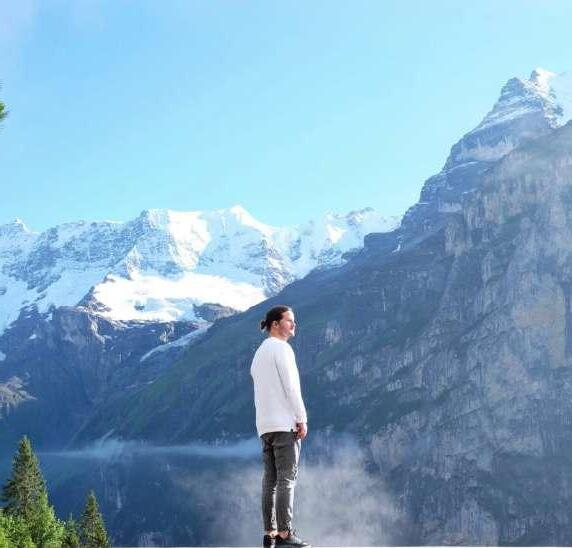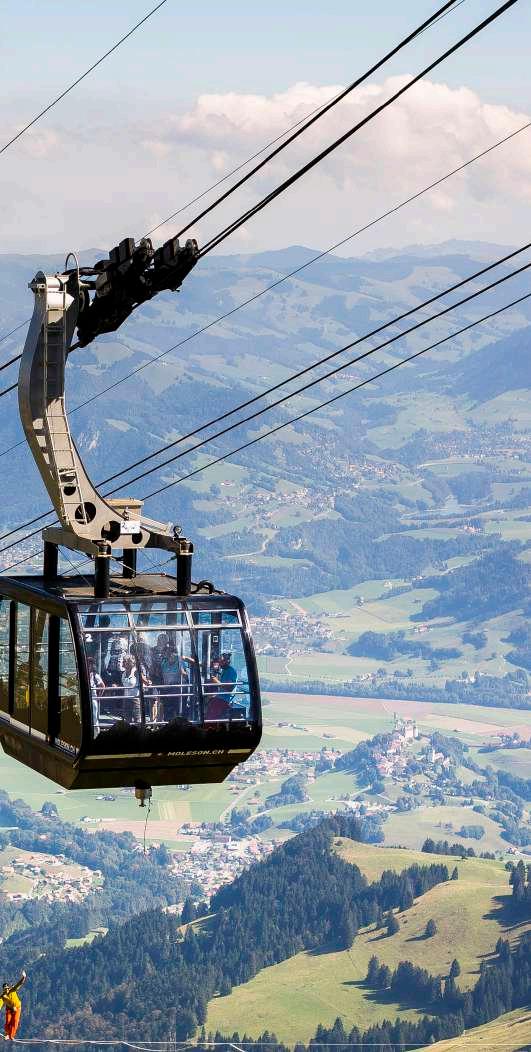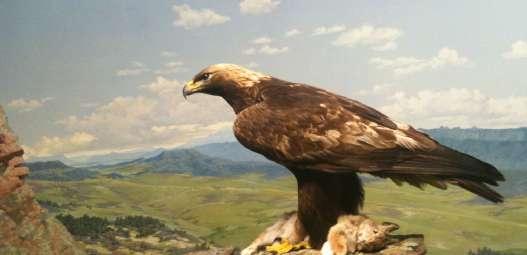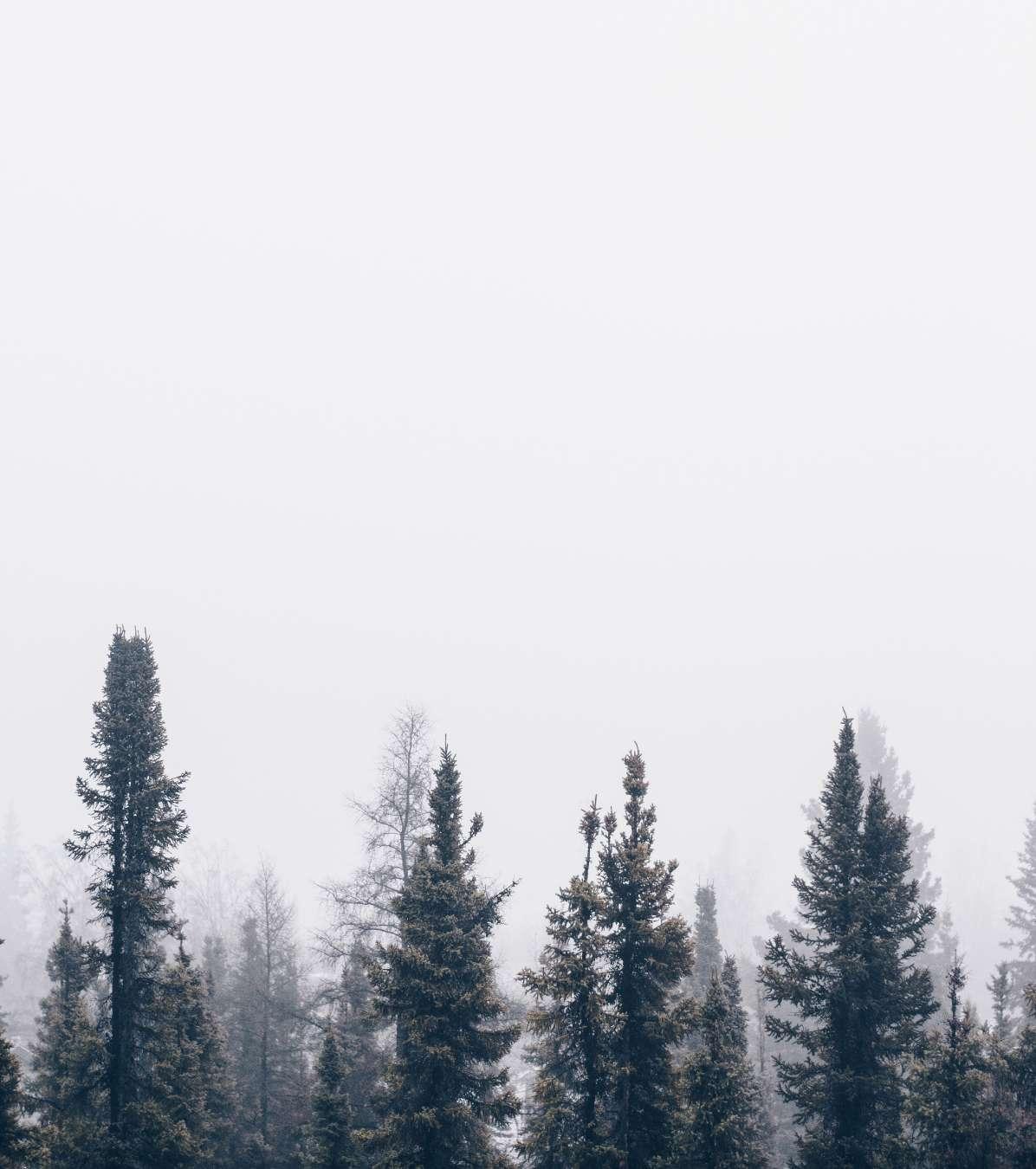swiss alps edition
ISSUE 1 JULY 2018
keys to the trails
UNDERSTANDING THE SIGNS TO HIKE THE SWISS ALPS

blissful escapes cow culture
THE MOST AMAZING SWISS ALPS EXPERIENCES
WHERE THE MOUNTAINS MOOOO-VE

ISSUE 1 JULY 2018
UNDERSTANDING THE SIGNS TO HIKE THE SWISS ALPS

THE MOST AMAZING SWISS ALPS EXPERIENCES
WHERE THE MOUNTAINS MOOOO-VE
Where the Mountains Moooo-ve
At Bolderhof Farm in Hemishofen, Switzerland, visitors participate in cow trekking, an opportunity to climb onto a dairy cow and ride through the rivers and woods of the Rhine lowlands.

Understanding the Signs to Hike the Swiss Alps
Learn about Switzerland’s sineage in the Alps, and the thoughts behind its simple system which is applied consistently across towns, rurual areas, and cities throughout the country. .
Riding a Glacier Aerial Cable Car
One of the thrills of a visit to Zermatt, Switzerland, is going to visit its glacier. It’s not just that you can ski year-round here or that you can actually go inside.
The Most Amazing Swiss Alps Experiences

A highlight of a recent European summer was the day I spent hiking in the Berner Oberland region of the Swiss Alps.
HIGH ALTITUDE FESTIVALS

Celebrate in the Swiss Alps this Summer


Over the summer, Europe’s festival-goers can hop from canton to canton. Parties are not just at ground level but also into the mountains.

Chilloion
68 TRIP BOOKING
Must do Activities Based on the Weather
70 PHOTOGRAPHY
Mountaineering: An Instagram Story
73 LODGING
Null Stern: The Invisible Room
76 CULTURE
Hiking into Culutral Diversion: French, German, Engadine

80 NATIVE SPECIES
Alpine Safari: The Big Five Native Species


84 PLANTS
Mountain Botanicals: Healers of the Body

90 FOOD
Bergghthus Aeschek: Cliffside Resturaunt
EDITORIAL STAFF
EDITOR IN CHIEF
Theresa Quedenfeld
CREATIVE DIRECTOR
Vicki Meloney
SENIOR EDITOR
Austin Grace
CONTRIBUTING EDITORS

Rachel Ficco
Rachel Smith
CONTRIBUTING WRITERS
Patrick Manturi
Ben Ginder

Andrew Venzie
Nate Brocato
Taylor Hoover
CONTRIBUTING ARTISTS
Melanie Edwards
Jarrett Patterson
Emily Rudolph
SPECIAL THANKS
Andrew Frank
Ilya Hefets
Jon Anthony Sara Wingert

ith the beginning of the new year and summer well under-way, there are many possible exciting adventures to plan for this coming summer. Going away and exploring new destinations gives you fresh views, which are different than your everyday scenery. With going away, much of your time is spent planning, packing, and preparing for an escape. The anticipation of traveling produces a huge aura of excitement.
With Aventurë , we show you all the adventures you don’t want to miss before the sun sets on summer. We are hiking to the Swiss Alps in this issue, which contain almost all the highest peaks in the Alps. This makes it the perfect to hike and enjoy beautiful scenic views from the peaks.

Our feature article in this issue focuses on what to expect while hiking in the Swiss Alps, where it teaches you about the different types of trails available to hike with your family. Continuing the trail, we will also feature Bernese Oberland’s unforgettable Swiss Alps experience. By the end of this issue you will learn about all the things you need to know to hike the Swiss Alps before the season ends. From packing your bag to learning how to decode trail markers, in Switzerland, Aventurë will take you hiking from your home to the breath-taking destination.
 Theresa Quedenfeld Editor in Chief
Theresa Quedenfeld Editor in Chief

 Written by Grimselwelt
Written by Grimselwelt
HIKING TIME:
1h 30 from the top station of the Trift gondola to the Trift Bridge
STARTING POINT:
Top station Trift gondola
PUBLIC TRANSPORTATION: Bus stop Nessental, Triftbahn
ith the Trift gondola, you can reach the Trift valley with its majestic glacial surroundings open year round. From the top station, a 1.5 hours hike will lead you to the highlight of this daring valley — the Trift suspension bridge. Enjoy the jaw dropping and breath-taking view over the lake and glacier. If you want to pay a visit to the Windegg hut, you can choose between the direct path “Ketteliweg” (level T3) or the “Family trail” (level T2). Surefootedness is required for the direct descent from the Windegg hut to the Trift top station. Starting at the Trift Bridge, an alpine route (level T5) will lead you to the SAC Trift hut (approx. 3h).
T2 Mountain hiking (white-red-white)
T3, demanding mountain hiking (white-red-white)
Trail with continuous path and balanced ascent.
Exposed sites may be secured with ropes or chains. Possible need to use hands for balance. Partly exposed sites with fall hazard, scree, pathless jagged cliffed rocks.
Some surefootedness. Elementary sense of direction.
Good surefootedness. Average sense of direction. Basic alpine experience is important.
T4 alpine hiking (white-blue-white)
The track is not necessarily available. At some sites, hands are needed to progress on the trail. Exposed terrain, precarious grassy acclivities, jagged rocks, névé and snow-free glacier passages.
Familiarity with exposed terrain. Solid trekking shoes. Ability for terrain assessment. Alpine experience. Retreating from wheather may be rather challenging based on location.
witzerland is arguably Europe’s top hiking destination, described by the Rough Guides as featuring “some of Europe’s finest walking terrain, with enough variety to suit every taste.” One of the virtues of hiking in the beautiful country of Switzerland is that many of the major trails are “inn-to-inn,” stopping every night in a village or town which eliminates the need to haul a tent and camping equipment. A successful hiking trip requires care in selecting proper protective gear, clothing and other items to keep yourself protected in various climates and terrains.
Hiking can frequently involve luggage transfer. If you are on a tour, you need only a day pack and light hiking boots in your backpack. If you strike out into the Alps independently, you need to carry everything you might need on your back. Consider a backpack with a weight-distributing belt.

Choose one waterproof shell or insulated glove with two sets of lighter-weight “action” gloves. The shell/insulated glove are worn only when necessary, for added warmth on summit day or in excessively wet/cold conditions. Some guides even use Atlas Gloves, which are gardening gloves with a rubber grip.

A piece of hiking gear that can make or break your hiking trip in Switzerland is your boots. Taking care of your feet are important. Heavy hiking boots are a must with good ankle support and possibly trekking poles. This will make your trip much easier and save you some foot pains once you get back from your trip.
BEST HIKING BACKPACKS
Osprey Atmos AG 65
REI Co-op Traverse 70
Gossamer Gear Mariposa 60
BEST HIKING GLOVES
The Northface Etip Outdoor Research Versa Liner Black Diamond Soloist
BEST HIKING BOOTS
Salomon Quest 4D 3 GTX
Lowa Renegede GTX Mid Merrell Moab 2 Mid WP

The shield will repair you from wind and light rain. In case of heavy rain, it is always good to bring a poncho. In case you do not bring a poncho, be aware that the backpack will have a rain cover.
The jacket is of course fundamental in any mountain hiking trip. This insultating layer is an essential item that is breathable, quick drying, windproof, and highly water resistant. Similar to a sleeping bag, this insultating layer perfect for when you hike at sundown and it gets cold out.


Bring at least one t-shirt per day and eventually a long sleeves shirt for the nights. In terms of what kind of clothing to bring, cotton is always a bad choice for cross-country hiking. When it gets wet, it becomes heavy, loses its insulation value, and takes a long time to dry.





 by tanya zurich
by tanya zurich













he Swiss sense of organization definitely speaks to some part of my psyche, but it is the mountains that speak to my soul—there is nothing quite like hiking in the Swiss Alps. I've realized what makes hiking in Switzerland unique is its merely perfect signage and the amazing experiences along the way. In true Swiss style, there is a national law that requires all village, mountain and high-altitude paths to be neatly signposted. The Federal Act on Footpaths and Hiking Trails requires each canton (country) to plan, maintain and mark all the trails. It’s a simple system, but it is applied consistently in each city and rural area throughout the country is what makes it so useful. The routes go from city centers to alpine ridge lines, including sidewalks, side streets, shared-use paths, and flat dirt footpaths.
It’s all very logical, very orderly and very Swiss. Practically every mountain town has a cable car or lift to carry you up the mountain so you don’t have to hike up first to get the views. Most resorts have, easy panorama trails for casual walkers, but there are trails for those who want a challenge. Though people who want a challenge usually come with a plan and appropriate gear to make the special trek.
Most mountains have a restaurant at the top so you can relax and enjoy the view without even walking. Trails are generally well marked in Switzerland. You’ll either see yellow diamonds or white-red-white stripes painted on stuff. Other countries use different colors, so don’t get confused. Switzerland uses different icons on their trail signs to help you understand where transportation or different places are. The wine glass icon means you’ll find a
restaurant at that destination. The bus, train or gondola symbol means you can catch public transportation there.







Here are a few terms that will help in the German-speaking Swiss alps.













Wanderweg
Walking path.


Schutzgebiet
Nature reserve.
There may be hiking, fire, or picnic restrictions.


Lehrpfad
Educational path, the trail will have info signboards along the trail.
Feuerstelle






















Picnic area with fire pits, usually with wood.
Bergstation
Mountain cable car station. Hunde an der Leine führen Dogs are required to be on a leash in certain areas.

It is the mountains that speak to my soul — there is nothing quite like hiking in the Swiss
are generally accessible trails and usually determined for foot traffic. They generally lead aside from roads carrying motorized traffic and are usually not surfaced with asphalt or concrete. These trails are easily hikable for those with not much hiking experience. These trails involve no special demands or requirements.
Steep sections are negotiated with steps. Areas with the danger of falling, tripping, or rocky ground are protected by hand rails. Signalization for hiking trails is yellow.


are challenging mountain trails. They sometimes lead people across glaciers and rockfall areas. Structural provisions may have been undertaken and these would in any case be limited with a danger of falling or getting injured.


















Users of Alpine routes must be surefooted, have a head for heights, be physically very fit, climb with their hands, and know how to use ropes and pick axe. They must have knowledge of the dangers within the mountains. Signalization of Alpine routes is a blue signpost with white-blue-white tip.



are hiking trails, which partly access difficult terrain. They are mostly steep, narrow and exposed in places. Particularly difficult sections are secured with ropes or chains. These trails are challenging.





Users must be surefooted, have a head for heights, be physically fit, and have knowledge of dangers in the mountains. Solid boots with good sole profiles, and equipment appropriate to weather conditions along with topographical maps are best suited for the hike. Practice before attempting.









































e all need a scenic mountain escape experience in our lives and the Bernese Oberland in Switzerland is as picturesque as it comes! Our love for Switzerland began back in December 2015 we when spent two days in the small chocolate box village of Saas Fee with the promise of a guaranteed white Christmas, and it delivered!
It was white and magical and we knew we would be a place to travel back to. In planning for our great return trip, the
Jungfrau Region in Bernese Oberland just kept popping up. This area is north of the biggest peaks, has a lush green landscape in the Summer with white icy mountain tops and an incredible contrast of low valleys to high peaks. Also, cute mountain villages, were great for hiking. We were totally sold on everything we saw!
We flew into Zurich, spent one night in Lucerne and then two nights in the quaint mountain village of Mürren. We only had three things on our agenda:
BY PHOEBE BROWN

So here is to our outstanding Bernese Oberland summer adventure!
Mürren was our base and it was so perfect! To get the most of your experience you
want to stay in a mountain village. We stayed at the Hotel Regina which had lovely minimalist alpine decor, friendly staff, great breakfast and incredible views!
This is a easy hike for hiking newbieslike us to ease ourselves in. It’s just 35 minutes downhill and 45 back up.

Chris and I are not experienced hikers by any stretch of the imagination. We needed
to ease ourselves in in to the experience. It’s just 35 minutes downhill and 45 back up. It really was not that bad of a hike.
Chris and I are not experienced hikers so we felt very satisfied with ourselves on completion of this hike! The vistas were unbelievable. It’s one of my favourite places and I know I’ll be back again. ◊
The earliest recipe for cheese fondue comes from a book in Zurich.
1970


Swiss Cheese Union named fondue the Swiss national dish to increase cheese consumption. The extension of the name “fondue” used to describe dishes served in a communal hot pot dates to New York.
First recipe for modern fondue was published. Switzerland introduced Americans to fondue during the World’s Fair.
“The Bernese Oberland in Switzerland is as picturesque as it comes!”
Resembling fat squirrels, marmots have a high-pitched chirp. They can be found in meadows and grasslands.
They are mountain goats most wanted for their meat and horns. They are thought to have medicinal properties. Find them in the rocky alpine areas.
They are hoofed goat-antelopes who are nimble and quick. Chamois are found in high alpine meadows, as well as forested areas in the Jura, Switzerland.

NATIVE SPECIES
With a wingspan of up to 2.2 metres, the so-called “king of the air” is an impressive sight in Swiss skies. They are found all over the tall mountainous Swiss Alps.
Named the “Animal of the Year 2017” by Swiss conservation, the red deer is Switzerland’s biggest wild animal. Deer can be found in much of the Swiss Alps, particularly Graubünden.

ave you ever heard of Berggasthaus Aescher-Wildkirchli? Built over 170 years ago to originally house farmers and their livestock, this mountain hut perched high above in the Swiss Alps has since evolved into one of the most unique restaurants in the world. Tables are on a first-come, first-serve basis, so arrive early if you want to beat the crowd. What makes this place fascinating, is how it was really precariously built into the large mountain.
Still, to this day and time, it clings to the foot of a vertical cliff. Now, is it just me, or does this place take adventurous eating to a whole new level!

Instead of rushing through the views on your ride up, this is your chance to enjoy nature’s finest at a leisurely pace. They open early at 7:30 a.m. for those morning early risers, but lunch doesn’t start until 11 a.m. Aescher Guesthouse does not offer any type of reservations.
The views are breathtaking when you get there. From the extensive high plateau with a rich alpine flora you will get a magnificent view across the Appenzell hill-landscape, Sankt Gall, Thurgau and Lake Constance. Yet, you will really have to work for this one of a kind Swiss meal, as getting to this cliffside restaurant won’t be any ole simple task. To even access this mountain eatery, it is a challenge in itself. It is not the easiest place to get to.
You’ll have to ride in an aerial cable car and hike through a prehistoric cave to adventure there and enjoy yourself.

But don’t worry — once you arrive, you’ll be welcomed with a picturesque panorama of the Alpstein mountain chain, giving the phrase “dinner with a view” an entirely new meaning. Sound like your kind of thrilling adventure? Before you start planning your visit, note that Aescher Guesthouse is closed during the winter. It will reopen for the 2018 season in May (and be open until November 1). Thrifty Traveler notes that the previously offered overnight stays are no longer available. Don’t let that keep you from the view, though. Even a few hours at on the side of a cliff is a one-of-a-kind yummy dining experience.
Bernhard & Nicole Aescher Knechtle 9057 Weissbad/AI
+47 71 799 11 42


